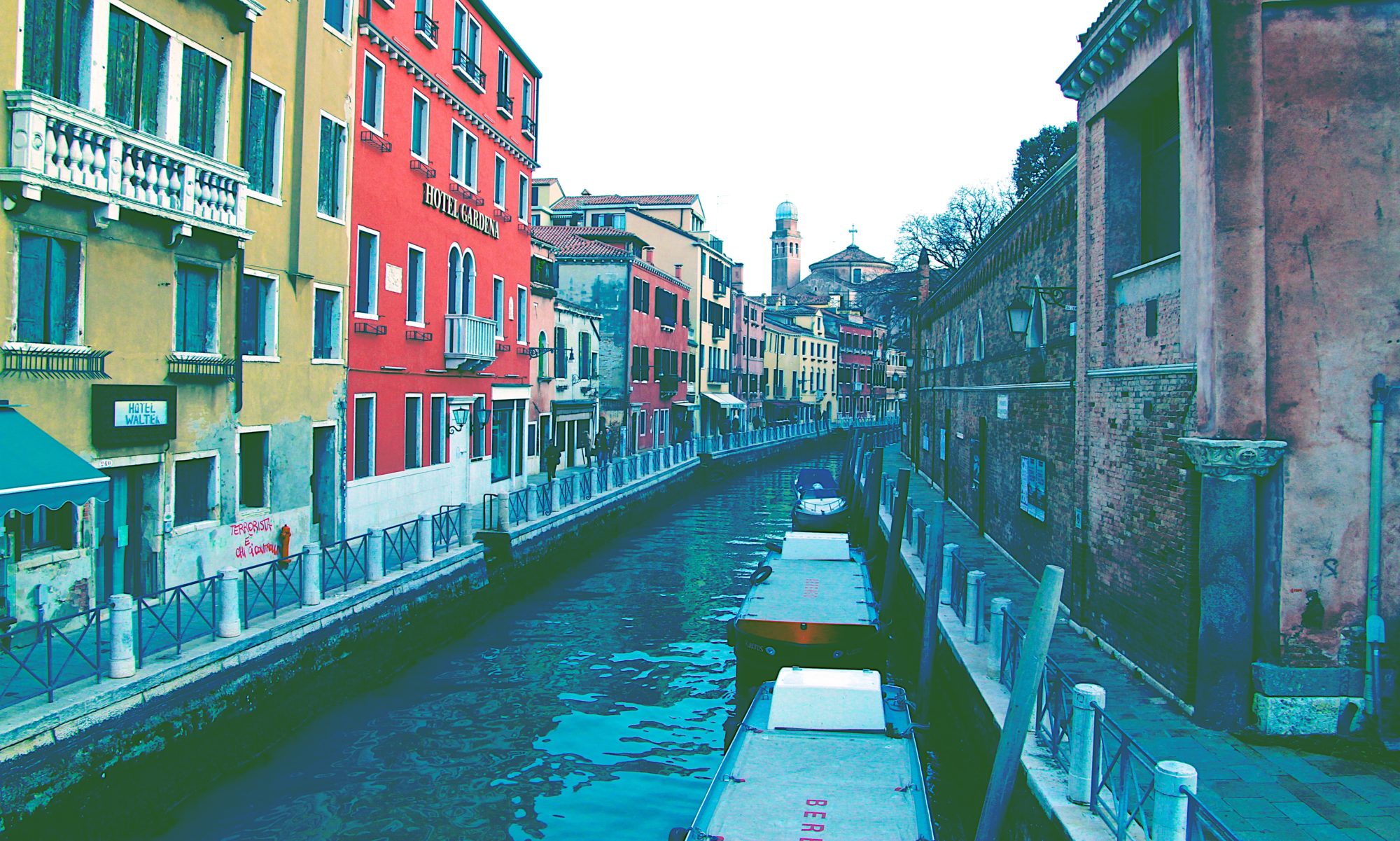
This month we will talk about the iconic symbol of Giudecca Island: Molino Stucky and its owner Giovanni Stucky.
***
Personality: Giovanni Stucky.
Place: Molino Stucky.
***
Molino Stucky

Molino Stucky was created following what we would now call the “American dream” of Hans Stucky. In 1841 he was the first Stucky to reach Venice where he started to work as miller. However, it was his son, Giovanni, to buy the building which was later called Molino Stucky in 1884.
Soon, this factory became an industrial masterpiece, able to process 2500 quintals of wheat per day and to employ up to 1500 workers.
The factory was extremely modern for that age with gas illumination, locker rooms and later it became the first private building of Venice with electricity. In 1895 the six-storey structure was renovated by the German architect Ernst Wullekopf in its actual form: a neogothic façade, the tower and the big clock.
The factory activity began to decline in the 1910s, a time when the maritime trade of cereals was starting to decline in favour of the rails trade.
Finally, activities ceased in 1955.
After the end of industrial production, a huge project of renovation was carried out in order to transform the building in a luxury hotel, which finally opened in 2007. This was one of the biggest industrial and urban recovery plans carried out in Europe.
Nowadays, Molino Stucky is both past and present. It testifies the industrial past of Venice and it has been part of the touristic economy of Venice in the last decades. It is still a great example of neogothic industrial architecture which is quite a unicum for Venice.
Giovanni Stucky

Giovanni Stucky was born in Venice on the 27th May 1843. As his father before him, he travelled all over Europe to gain new experiences and insights in the art of milling.
When he came back to Venice, he implemented his findings to build the most technologically advance factory of Venice and one of the best of Europe. Soon, he grew rich enough to start a new pasta factory and to buy Palazzo Grassi (a wonderful palace on Canal Grande) and lands on the mainland.
He is said to be the richest venetians of that time.
Unfortunately, on 21st May 1910 he was assassinated at Venezia Santa Lucia train station by a former employee called Giovanni Vincenzo Bruniera.
During his life he has been a famous philanthropist and part of the cultural life of the city: among other things, he strongly supported the Biennale.


